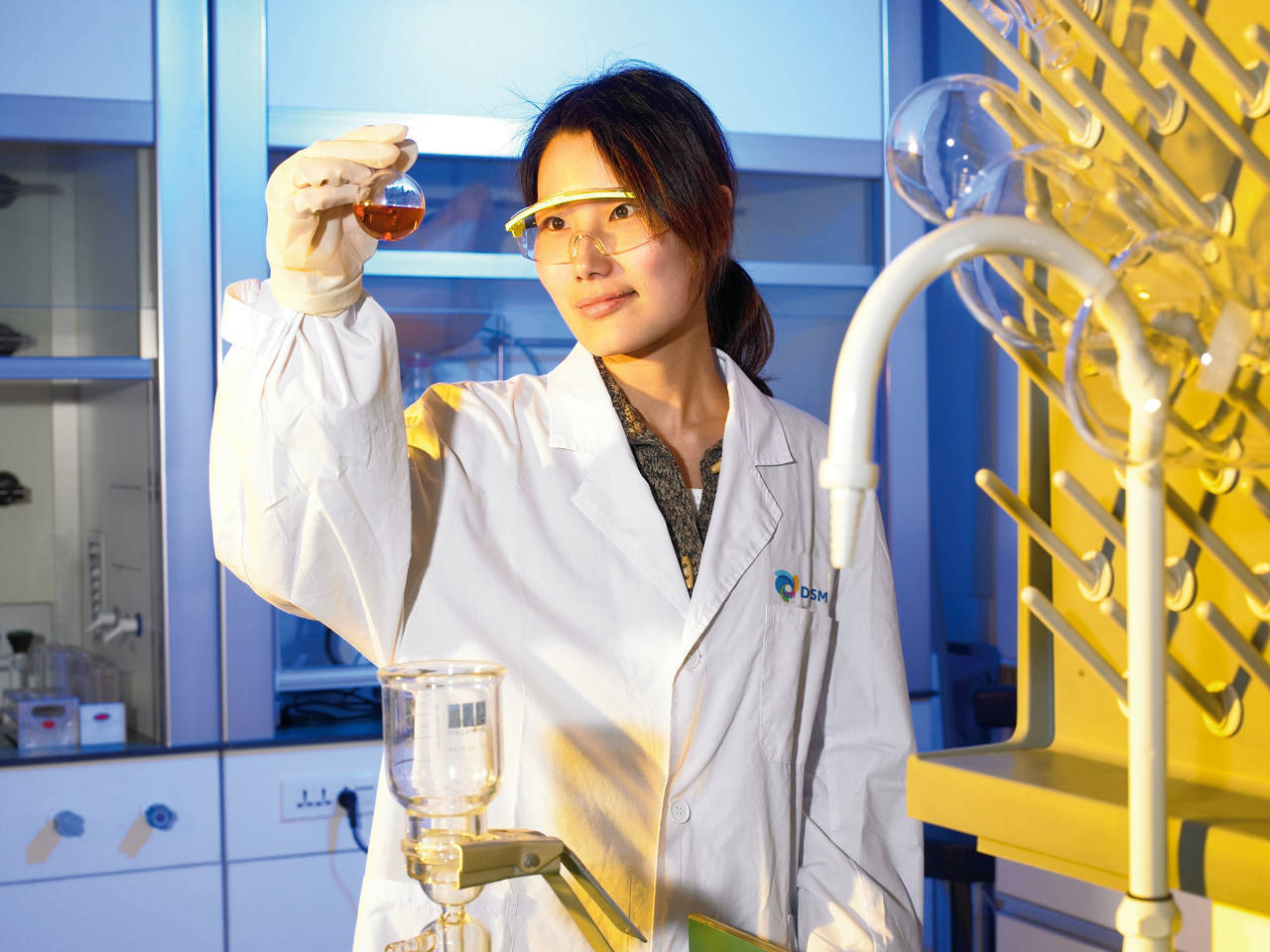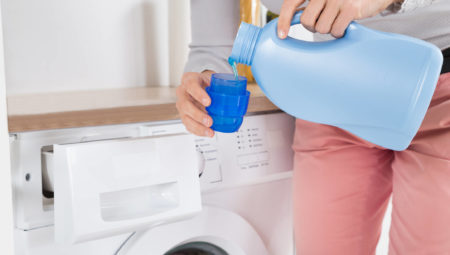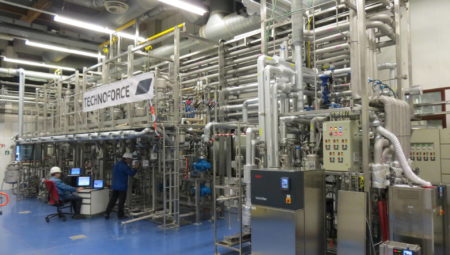The ‘LA2AA’ project is coordinated by Michèle Janssen. The production of Adipic Acid (AA) from Levulinic Acid (LA) offers a biobased alternative to the traditional route based on ring carbon compounds such as benzene and cyclohexane. The levulinic acid raw material is obtained from (residual) streams containing cellulose. ‘Wood chips are an example, as long as they have C6 chains, but we are not concerned with that process.
The GFBiochemicals company here at Brightlands Campus is concentrating on that. Our research starts with the levulinic acid. It is actually much easier to produce it from biomass than from fossil raw materials, and with high yields as well.’
Potent greenhouse gas
One of the things required for the classic synthesis of adipic acid from derivatives of fossil fuels is nitric acid. The reaction product that arises, nitrous oxide or laughing gas, is the main reason for developing a biobased alternative, explains project leader Janssen. ‘One of the biggest advantages of this new route compared with the current one is that no N2O is formed. That is a potent greenhouse gas. The process also costs a lot of energy, which results in extra CO2 emissions. Our new route looks to be much better as far as environmental impact goes. What’s more, it could turn out to be cheaper than the traditional route too.’
Four-step route
The LA2AA project started in 2010. ‘Together with a large number of experts in the chemical and biocatalytic fields we devised a route on paper. We tried to estimate the extent to which the individual steps in that route are proven or whether breakthroughs still have to be forced. We drew up a ranking that helped us determine the most promising route for testing this on laboratory scale. The size of those production quantities can be counted in grams.’
A four-step route was developed for the synthesis process from levulinic acid. ‘Following a hydrogenation reaction we convert it into gamma-valeroactone; this is a cyclic compound. Then we do a ring-opening reaction on this molecule to obtain methyl pentanoate. We convert that into dimethyl adipate, and that in turn is converted into adipic acid. The interesting thing about this route is that these intermediary molecules also have applications in their own right. Gamma-valeroactone is a solvent, but it can also be a monomer. This route can conceivably branch out into all kinds of directions that deliver valuable products.’
Scaling up
The chemical conversions are catalytic. The challenge is to end up with an efficient process that has as few by-products as possible. The results on laboratory scale are promising: ‘The catalytic agents are giving us good activity and selectivity. That means few by-products. And that is positive, in economic and environmental terms.’
Now the time has come to scale the batch-wise laboratory production up to continuous production in a pilot system. This is always an exciting phase, says Janssen, because only then does it become evident whether the process can actually work in practice. ‘Although all four steps of this process have been proven on laboratory scale, we still don’t know whether the catalytic agents will be sufficiently stable in a continuous process. We will have to run long durability tests to see whether we obtain enough purity. With this kind of process small quantities of impurities can arise that can whip up through recycling and deactivate the catalytic agents. That in turn creates side reactions. These are problems that we have investigated very thoroughly, but in the end the pilot has to prove that we can recycle in an economically viable way. We can only draw in external partners to commercialise the process further once this has been proven.’
Impurities
A dedicated demonstration plant will be designed and built for this phase. With an annual production of between 3 and 10 kiloton of adipic acid, the product will really have to find a place on the market. ‘For the customer it is important that the biobased adipic acid offers the same quality, just as pure and preferably cheaper than our current product.’ Impurities, however minimal, are inherent in a chemical process. The biobased adipic acid will in any case contain different impurities to those in the classic synthesised product. ‘The question is how that will affect nylons or applications under the bonnet in the long run – the engineering plastics we are aiming at.’
Industrial scale around 2026
The global production of adipic acid is currently around 3,000 kiloton per year. Obviously much more research and many more experiments are needed before a biobased process can achieve those kinds of quantities. ‘The test with the continuous process in the new pilot plant has been planned to run until mid-2017. So in a little more than twelve months you could start thinking about the next step: a demo plant. It would have to be designed and built specifically for this purpose, and that will take another five years. Once that has all proven successful, you can scale up to a real, industrial scale. I’m talking about at least 10 years from now. Once the biobased product is just as good and at least as cheap, that could have a huge impact on the market.’
Isn’t Janssen afraid that rival companies are ahead of DSM? ‘Other chemical companies are certainly carrying out activities as well. I’ve seen patents go by with different routes. We have to wait and see which route will be the winning one. Possibly several routes can exist alongside each other because they are all efficient and end up with approximately the same price tag.’



